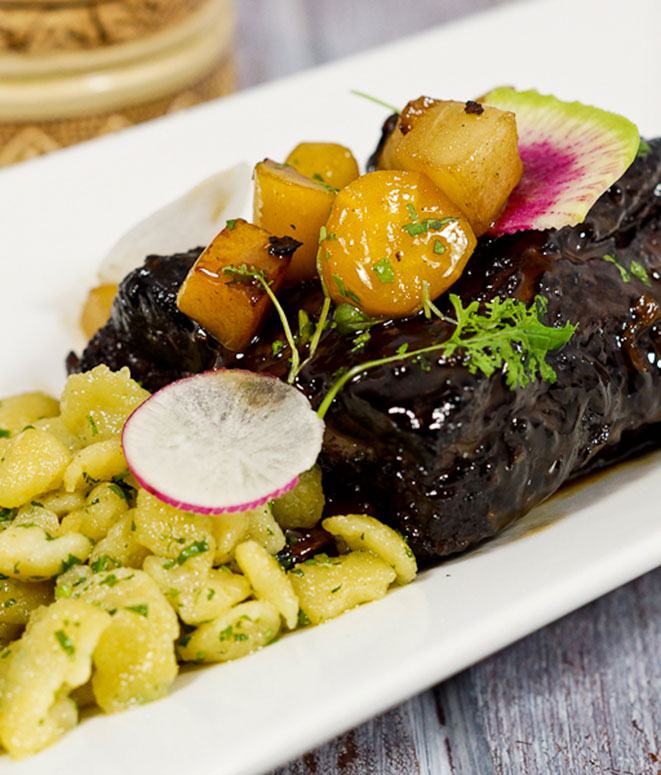When you think of German food, if you picture a lederhosen-clad waiter with a tray of sausages sauerkraut, then you’re close to where Cincinnati was about a year ago. Even with the city’s German-American history and citizenry, its food scene lacked Germanic fare.
“There was no stand-by restaurant for German food,” says Jackson Rouse, executive chef at Bauer European Farm Kitchen in Cincinnati. “My last name is Rouse, and I’ve cooked all types of cuisine, and I’d never cooked my heritage cuisine of German. No recipes were really even passed down in my family because of the stigma from World War II.”
Rouse embraced his heritage when he helped open Bauer in 2017 and started cooking Eastern European food with a sous vide flare. He incorporates products from local artisans and sources his produce and proteins from local farmers for his menu.
“The idea was to take the same products that local farmers had in Germany, and translate them into a more contemporary preparation—but not too far out there that people couldn’t contemplate the roots and the comfort of the food,” he says.
Folding Alsatian, Hungarian, and Polish food into the menu was crucial for Rouse, who wanted to be inclusive of more Eastern European culinary traditions. His choucroute garnie—the traditional Alsatian dish of boiled pork, Champagne-washed sauerkraut, mustard, and potatoes—is a crowd favorite.
“Cincinnati is Porkopolis, so we sneak in our pork belly, pork shank, and sausages,” Rouse says. “We blanch and sous vide our potatoes, then fry them, and we do a sauerkraut that’s made with sparkling wine, Belgian beer, and fermented apples in fall and different root vegetables in winter.”
Sous vide helps Rouse cook his proteins perfectly, intensify the farm-fresh flavors of vegetables, and ensure consistency and ease in his small kitchen. Sauerbraten short ribs and octopus both hit the water bath at Bauer, as does the tête de cochon—this whole pig’s head requires a three-day pre-order (it’s brined for two days and cooked sous vide for one), and in fine-dining style, it’s carved tableside.
“I used to run barbecue restaurants, and I’m kind of the whole-hog type of guy, so I thought, ‘How cool would it be to showcase a whole pig head like they do in Chicago and New York but in the get-down style?’” Rouse says, referencing the slang for taco preparations that use a whole pig head. “I have two farmers who try to keep up with me.”
Though pig is prominent at Bauer, vegetarians need not be frightened by the menu. For Rouse, going back to his roots also involves lots of root vegetables.
“There’s nothing better than cooking sous vide vegetables and finishing them on a plancha,” he says. “Pretty much every vegetable that we use is cooked sous vide. We do several types of turnips, and kohlrabi has made this comeback now, and carrots and parsnips and celery root—all they need is a quick char.”
Plant-based eaters will love the chou-fleur (roasted cauliflower with seed streusel) or ratatouille, but no matter what you order at Bauer, Rouse’s vision for the future of Eastern European food is present in the dish.
“For me, it’s like, if you don’t know where you come from, how do you know where you could end up?”

